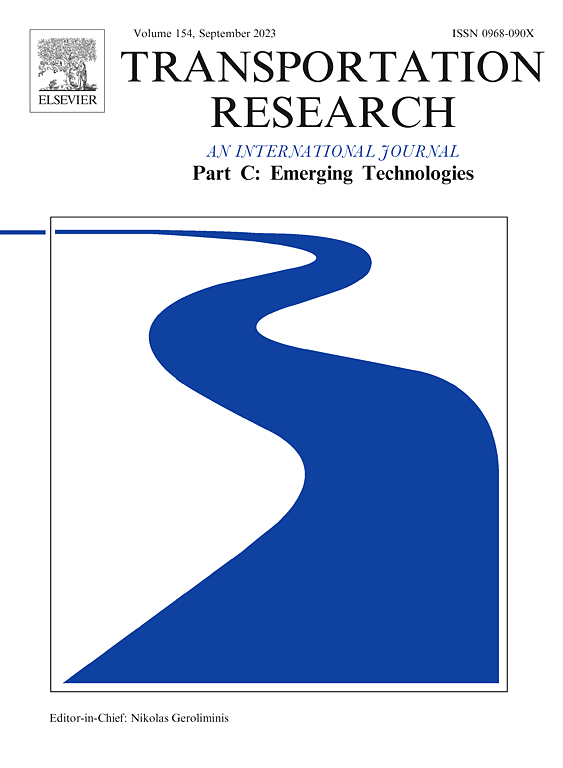Incorporating lane-change prediction into energy-efficient speed control of connected autonomous vehicles at intersections
IF 7.6
1区 工程技术
Q1 TRANSPORTATION SCIENCE & TECHNOLOGY
Transportation Research Part C-Emerging Technologies
Pub Date : 2025-02-01
DOI:10.1016/j.trc.2024.104968
引用次数: 0
Abstract
Connected and autonomous vehicles (CAVs) possess the capability of perception and information broadcasting with other CAVs and connected intersections. Additionally, they exhibit computational abilities and can be controlled strategically, offering energy benefits. One potential control strategy is real-time speed control, which adjusts the vehicle speed by taking advantage of broadcasted traffic information, such as signal timings. However, the optimal control is likely to increase the gap in front of the controlled CAV, which induces lane changing by other drivers. This study proposes a modified traffic flow model that aims to predict lane-changing occurrences and assess the impact of lane changes on future traffic states. The primary objective is to improve energy efficiency. The prediction model is based on a cell division platform and is derived considering the additional flow during lane changing. An optimal control strategy is then developed, subject to the predicted trajectory generated for the preceding vehicle. Lane change prediction estimates future speed and gap of vehicles, based on predicted traffic states. The proposed framework outperforms the non-lane change traffic model, resulting in up to 13% energy savings when lane changing is predicted 4–6 s in advance.
求助全文
约1分钟内获得全文
求助全文
来源期刊
CiteScore
15.80
自引率
12.00%
发文量
332
审稿时长
64 days
期刊介绍:
Transportation Research: Part C (TR_C) is dedicated to showcasing high-quality, scholarly research that delves into the development, applications, and implications of transportation systems and emerging technologies. Our focus lies not solely on individual technologies, but rather on their broader implications for the planning, design, operation, control, maintenance, and rehabilitation of transportation systems, services, and components. In essence, the intellectual core of the journal revolves around the transportation aspect rather than the technology itself. We actively encourage the integration of quantitative methods from diverse fields such as operations research, control systems, complex networks, computer science, and artificial intelligence. Join us in exploring the intersection of transportation systems and emerging technologies to drive innovation and progress in the field.

 求助内容:
求助内容: 应助结果提醒方式:
应助结果提醒方式:


